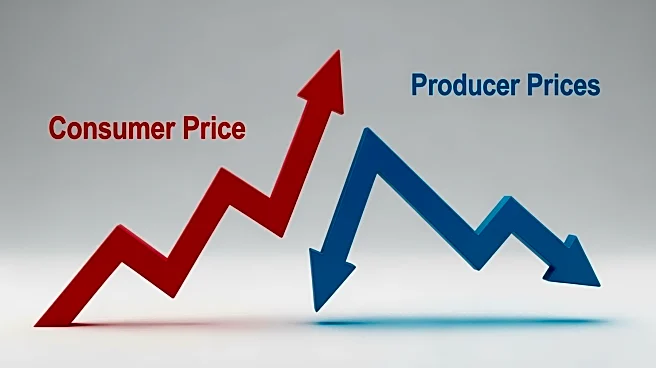What's Happening?
Vietnam is experiencing a surge in foreign direct investment (FDI), driven by high-value manufacturing and diverse agricultural products. Suan Teck Kin, Executive Director and Head of Research at UOB,
shared insights during the 'Gateway to ASEAN' conference in Singapore, emphasizing Vietnam's strategic location and stable policies as attractive factors for international investors. The country's exports have shown strong growth, particularly in the first nine months of 2025, indicating a shift of global orders to Vietnam. To sustain this momentum, Vietnam aims to improve infrastructure and enhance national competitiveness, with a goal to raise GDP per capita to $8,500 by 2030.
Why It's Important?
Vietnam's ability to attract FDI is crucial for its economic growth and development. The focus on manufacturing and agriculture not only diversifies the economy but also positions Vietnam as a key player in the global supply chain. This surge in investment can lead to job creation, technological advancements, and increased productivity. As Vietnam continues to grow, it could become a central hub for businesses looking to access key markets like the U.S., Europe, and ASEAN. The emphasis on infrastructure development and green growth further enhances Vietnam's appeal, potentially leading to long-term economic stability and prosperity.
What's Next?
Vietnam plans to prioritize infrastructure improvements to accommodate the increasing FDI and maintain its competitive edge. The country is also exploring opportunities in clean energy, leveraging its geographic advantages for solar and wind energy. As companies diversify production to mitigate risks, Vietnam's strategic location and stable environment make it an attractive destination for future investments. The government aims to synchronize infrastructure development to effectively seize opportunities and address challenges, ensuring sustainable growth and achieving its GDP per capita target by 2030.
Beyond the Headlines
Vietnam's focus on branding and marketing its agricultural products could significantly enhance its global presence. By improving productivity and quality, Vietnam can reduce reliance on manufacturing and diversify its export portfolio. The 'China + 1' strategy continues to influence investment decisions, with Vietnam positioned as a key alternative for companies seeking to diversify production. The emphasis on clean energy and infrastructure development aligns with global trends towards sustainability, potentially positioning Vietnam as a leader in green growth within the ASEAN region.













